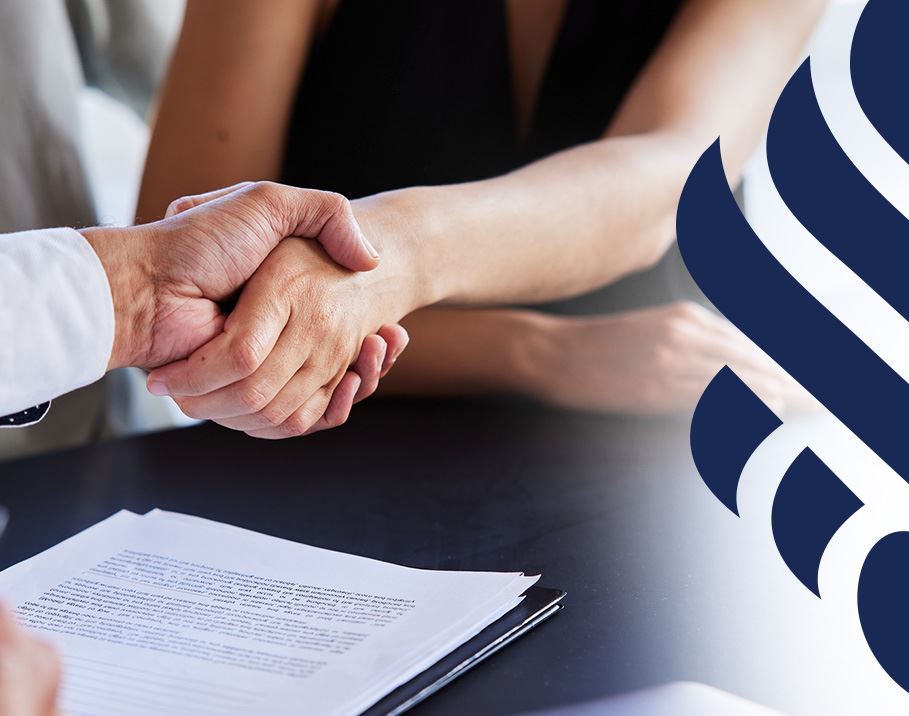
New York City Sidewalk Slip and Fall Attorneys
Fighting for Sidewalk Slip and Fall Victims in New York City
We tend to associate slips and falls with safety hazards that occur in buildings: Slick surfaces, uneven steps, and poor lighting conditions can all cause these accidents. We often forget that trips can occur just as easily because of problems with outdoor sidewalks. These incidents also tend to be more complicated than more straightforward slip and fall cases, as it may not be initially clear who is legally responsible for the sidewalk’s condition.
Sutton & Smyth, LLP can help you determine your legal options if you were injured after tripping and falling on a sidewalk. Our New York City sidewalk slip and fall lawyers can investigate what happened, determine liability, and help you take legal action against the liable party. We understand how to successfully navigate these cases, including those where the City of New York is responsible, and will fight aggressively to get you the maximum compensation you deserve.
Here’s how we can assist you:
- Expert Guidance: Navigating the legal landscape after a slip and fall can be complex. We bring our expertise to the table, guiding you through each step of the process. Our knowledge of personal injury law helps us identify the best strategies for your case.
- Thorough Investigation: Our team will conduct a comprehensive investigation into the accident. This includes gathering evidence, speaking with witnesses, and obtaining relevant documents. Our thorough approach ensures that no detail is overlooked, which can be crucial for building a strong case.
- Accurate Valuation of Your Claim: We understand the various factors that affect the value of your claim, including medical expenses, lost wages, and pain and suffering. We use our experience to accurately assess the value of your case and fight for fair compensation.
- Negotiation with Insurance Companies: Dealing with insurance companies can be daunting. We handle all negotiations on your behalf, ensuring that you don’t settle for less than you deserve. Our goal is to secure the best possible outcome for you.
- Legal Representation: If your case goes to court, having us by your side means you have a skilled advocate fighting for your rights. We will present your case effectively and work diligently to achieve a favorable verdict.
- Peace of Mind: Managing a slip and fall claim on your own can be stressful. By hiring us, you can focus on your recovery while we handle the legal aspects. Our support provides peace of mind throughout the process.
Do not wait to discuss your sidewalk slip and fall case with our experienced team. Call (866) 935-1862 or contact us online to schedule a free initial consultation.

Our Satisfied Clients
Read What They Say About Us

-
“Highly recommend! Thank you!”
“Daniel was very knowledgeable, super attentive, and quick to inform me throughout the entire process.”- Samantha S. -
“I would highly recommend this law firm.”
“He continuously updated me throughout the entire process and answered all my questions.”- A. L. -
“Thank you so much for listening to us when no one else would.”
“Leigh Sutton & Daniel Smyth made sure that his voice was heard and he was compensated to the max!”- Mari K. -
“I always felt like I was in great hands.”
“My experience working with Dan was working with someone transparent, helpful, and consistent, and I'm really happy I met him when I did.”- Erin R. -
“Obtained better than expected results on all cases referred...”
“I am an attorney that has referred a number of sensitive cases to the attorneys at Sutton & Smyth, LLP.”- Michael L. -
“Daniel made me feel at ease throughout my entire process.”
“He is very knowledgeable, super attentive, and quick to inform and respond.”- Catherine M. -
“This the law firm for you!”
“Very good at his job and I'm beyond grateful and satisfied with the job he's done.”- Dominique McCloud -
“I would absolutely recommend them!”
“Extremely helpful counsel during a stressful time in my life!”- Kelly P.


REcent Case Victories
Our top priority is to devise customized legal strategies that are tailored to the unique legal needs of our clients, no matter how simple or complicated their situations might be.
-
1.775 Million Bus Accident
-
$1.7 Million Property Damage Due to Fire
-
$1.25 Million Apartment Building Slip and Fall
-
$775K Motorcycle Accident
-
$750K Ceiling Collapse in Rental Apartment
-
$750K Restaurant Slip and Fall
How Long Do I Have to File a Sidewalk Slip and Fall Lawsuit in New York?
The amount of time you have to file a premises liability lawsuit will depend on whether you are suing a private property owner or the City of New York. In cases involving private property owners, the statute of limitations for slips and falls is three years from the date of the accident. If you are taking legal action against the government, you generally only have 90 days from the date of your fall to file a “notice of claim” against the City of New York, which is why a prompt investigation is so important.
If someone suffers fatal injuries because of a sidewalk accident, certain immediate family members or the personal representative of the decedent’s estate have two years from the date of the victim’s passing to bring a wrongful death lawsuit against a private commercial property owner. The same 90-day notice of claim rule applies to cases involving the City of New York.
What Damages Can I Recover in a Sidewalk Slip and Fall Lawsuit in New York City?
Regardless of whether you take legal action against the government or a private commercial property owner, a premises liability lawsuit is designed to compensate you for all of your economic and non-economic damages. Economic damages are calculable expenses, while non-economic damages are tougher-to-quantify consequences.
What Causes Sidewalk Slips and Falls in New York City?
A sidewalk slip and fall is an accident that occurs when a person walking on a sidewalk loses their balance and falls to the ground. These incidents typically result from a combination of factors, and they can lead to injuries ranging from minor bruises to more severe consequences like fractures or head injuries.
Common causes of sidewalk slip and falls include:
- Weather Conditions: Slip and falls often happen in adverse weather conditions such as rain, snow, ice, or even just wet leaves. Moisture on sidewalks can reduce traction, making it easier for someone to slip.
- Uneven Surfaces: Irregularities in the sidewalk, like cracks, bumps, or holes, can cause people to trip or lose their balance. Sidewalks that are poorly maintained or damaged are more likely to be hazardous.
- Inadequate Lighting: Poorly lit sidewalks can make it difficult for pedestrians to see potential hazards, leading to tripping or stumbling. Inadequate lighting may also hide defects in the sidewalk.
- Obstacles and Debris: Objects left on the sidewalk, such as discarded items, fallen branches, or construction materials, can pose tripping hazards if pedestrians don't notice them in time.
- Slippery Surfaces: Sidewalks can become slippery due to spilled liquids, oil, or other substances. This can significantly increase the risk of a slip and fall accident.
- Inadequate Maintenance: Sidewalks that are not properly maintained by the responsible authorities or property owners can develop hazards over time. Neglected maintenance may include failure to repair cracks, remove hazards, or clear snow and ice promptly.
- Distractions: Being distracted by a mobile device, conversation, or other factors can cause pedestrians to be less attentive to their surroundings and more likely to trip or slip.
- Footwear: The type of shoes worn by a pedestrian can influence their susceptibility to slipping and falling. Wearing shoes with insufficient traction on slippery surfaces can increase the risk.
- Age and Physical Condition: Older adults and individuals with certain physical conditions or disabilities may be more prone to slip and fall accidents due to reduced balance and mobility.
- Improper Footing: Sometimes, pedestrians may not pay attention to where they are walking, stepping on uneven surfaces or obstacles without realizing it.
Who Is Liable for a Sidewalk Slip and Fall in New York City?
After suffering injuries in a sidewalk slip and fall, you may understandably be worrying who is legally responsible: The City of New York, or the owner of the adjacent property? The answer depends on several factors.
Laws specific to New York City clarify when the government is and is not liable for a sidewalk accident. This means that, in many cases, the owners of the property abutting the hazardous sidewalk are often the only liable party.
The City of New York can only be held liable for a sidewalk slip and fall if:
- The sidewalk is on public property or in a public area
- The sidewalk is not maintained up to the city’s standards
- The sidewalk is adjacent to a one-, two-, or three-family residence occupied by the property owner
- The sidewalk was not marked as “under construction” at the time of the accident
Even if all four of the above conditions apply, be aware that successfully suing the City of New York for a sidewalk accident has proven historically difficult. Generally, the courts will only rule against New York City in these cases if it can be shown the City had been informed of a sidewalk hazard but took no action. Our New York City sidewalk slip and fall attorneys will always be transparent and direct when discussing the strength of your case and will advise whether it is prudent to pursue a case against the government.
If the government is not likely to be found liable for a sidewalk accident, you may still have a case against the owner of the commercial property adjacent to the sidewalk. In New York, commercial property owners have a legal responsibility to keep sidewalks adjacent to their properties in reasonably safe condition. So, if the property owner knew or reasonably should have known about a sidewalk safety hazard but failed to sufficiently address it, they may be liable for your injuries.
Sidewalk Slip and Fall Injuries
Sidewalk slips and falls can result in a wide range of injuries, varying in severity from minor bruises and scrapes to more serious injuries that may require medical attention, surgery, or long-term rehabilitation.
Common types of injuries caused by sidewalk slips and falls include:
- Soft Tissue Injuries:
- Bruises: Contusions or bruises are common in slip and fall accidents when a person's body impacts the ground or nearby objects.
- Sprains: A fall can lead to sprained ligaments, particularly in the wrists, ankles, or knees, causing pain, swelling, and limited mobility.
- Strains: Strains involve stretching or tearing of muscles or tendons, often resulting in pain and limited range of motion.
- Fractures (Broken Bones):
- Wrist Fractures: Trying to break the fall with outstretched hands can lead to wrist fractures.
- Ankle Fractures: Tripping or twisting during a fall can cause ankle fractures.
- Hip Fractures: Older adults are particularly vulnerable to hip fractures, which can be debilitating.
- Arm and Leg Fractures: Falls may result in fractures in various bones of the arms and legs.
- Head Injuries:
- Concussions: When a person's head strikes the ground or another object during a fall, it can lead to a concussion, a type of traumatic brain injury.
- Skull Fractures: Severe falls can cause fractures of the skull, which can be life-threatening.
- Back and Spinal Cord Injuries:
- Herniated Discs: Falls can cause intervertebral discs in the spine to herniate, leading to back pain and nerve compression.
- Spinal Cord Injuries: A particularly severe fall can result in spinal cord damage, which can lead to paralysis or other long-term complications.
- Facial Injuries:
- Facial Fractures: Falls can cause fractures of facial bones, such as the nose, cheekbones, or jaw.
- Dental Injuries: Impact to the face may result in chipped or broken teeth.
- Cuts and Abrasions: Falling on a rough sidewalk surface can cause cuts and abrasions, which may require cleaning, stitches, or bandaging.
- Dislocations: Falls can force joints out of their normal positions, leading to dislocated shoulders, elbows, or other joints.
- Internal Injuries: In some cases, a fall can cause internal injuries, such as internal bleeding, organ damage, or rib fractures, which may not be immediately apparent but can be serious.
- Emotional Distress: Beyond physical injuries, slip and fall accidents can also result in emotional distress, including anxiety, post-traumatic stress disorder (PTSD), and fear of future falls.
The severity of injuries can vary widely depending on factors such as the height of the fall, the age and health of the person involved, the speed at which the fall occurred, and the surface conditions of the sidewalk. It's important for individuals who experience a slip and fall to seek prompt medical attention, even if their injuries initially seem minor, as some injuries may not manifest symptoms immediately but can worsen over time if left untreated. Additionally, documenting the circumstances of the fall and seeking legal advice may be necessary if negligence on the part of a property owner or municipality is suspected.
What to Do After a Sidewalk Slip and Fall in New York City
Sidewalk slip, trip, and fall accidents can cause severe and permanent injuries. However, because the laws in New York tend to favor cities, towns, adjacent building owners, and insurance companies over accident victims, you must make every effort to protect your rights immediately following your fall.
After suffering injuries in a sidewalk slip and fall accident, you should:
- Call 911. Ask for an ambulance if your injuries require immediate attention. Stay in the area where you fell until help arrives, and be sure to tell ambulance personnel about the injuries you are aware of.
- Take photos. Document the scene by taking photos of the area of the sidewalk where you fell, specifically any hazards that caused you to trip or slip. You should also take photos of the adjacent buildings and your injuries.
- Gather addresses and contact information. If there are any witnesses, ask for their names, addresses, and phone numbers. Write down the addresses of the neighboring buildings.
- Seek medical treatment. If you do not take an ambulance, you should still go to an urgent care facility or your primary care doctor as soon as possible after the accident. Make sure the doctor documents all of your injuries, even those that seem minor.
- Get in touch with Sutton & Smyth, LLP. If your case potentially involves suing the government, you have very little time to start the legal process. We can get to immediate work on your case.